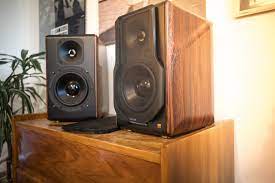The sound quality of a device is one of the most important factors that drive a buying decision. Similarly, your choice of music streaming app may also change depending on the compression methods and certification supported by the app.
However, one certification becoming increasingly popular, especially on the hardware side, is certified hi-res audio. But what does that mean, and what makes a pair of headphones or earbuds “certified” for better-sounding audio?
What is Hi-Res Audio?
Simply put, hi-res audio generally means that the music you’re listening to has a higher sampling frequency and bit-depth than CD audio. In terms of specifications, this means your music sounds better than 16-bit/44.1 kHz audio.
In the above specification, 16-bit indicates the bit-depth of the audio file. A higher number of bits makes the audio signal more precise, which means better audio quality. The 44.1 kHz indicates the sampling frequency, which is the number of signal samples per second during analog-to-digital conversion.
Unlike HD video, there is no universal standard for Hi-Res audio. Commonly used specifications for Hi-Res audio include 24-bit/96 kHz and 24-bit/192 kHz, both of which transmit 3.2 and 6.5 times the data compared to a CD.
The only real downside here is the file size. Hi-Res Audio files are generally very large, making them difficult to transfer locally and difficult to stream online. Lossless audio formats such as WAV, FLAC, and ALAC can run at 10-15MB per minute, which means audio files become large enough to store and stream.
What does “certified hi-res audio” mean?
Hi-Res certification is a design proposed and defined by Sony, recognized by CEA (Consumer Electronics Association) and JAS (Japanese Audio Association). To be certified for Hi-Res audio, your hardware must be capable of converting a 24-bit/96 kHz digital signal to analog audio for playback.
What this means is that when you see a pair of headphones, earphones, speakers, or almost any piece of audio equipment with the “Certified Hi-Res Audio” badge, it means that that particular device is capable of digital 24-bit/96 kHz Can reproduce media files accurately. in acoustic signals that you hear.
As you can probably guess, this is important for a number of reasons. Not only does audio at this specification sound better than the older 16-bit/44.1 kHz standard, but it is also closer to how the artist originally intended the recording to sound. Provided all parts of your listening setup support it, the resulting sound usually has more detail and texture and is richer overall.
What to Look for When Buying Certified Hi-Res Audio Equipment
While there are a large number of audio devices on the market that can help you listen to hi-res audio, there are a few things to keep in mind if you want to make the most of your listening experience.
As you can probably guess, this is important for a number of reasons. Not only does audio at this specification sound better than the older 16-bit/44.1 kHz standard, but it is also closer to how the artist originally intended the recording to sound. Provided all parts of your listening setup support it, the resulting sound usually has more detail and texture and is richer overall.
What to Look for When Buying Certified Hi-Res Audio Equipment
While there are a large number of audio devices on the market that can help you listen to hi-res audio, there are a few things to keep in mind if you want to make the most of your listening experience.
The first step is to make sure the product is certified for Hi-Res audio. It’s often printed in plain sight, so if you’re shopping online you shouldn’t have any trouble finding out whether the pair of headphones you’re interested in is certified.
Some lower-quality devices market themselves as hi-res supported, but do not actually have the certification. Hi-res certification is difficult to obtain and requires the integration of a high-quality DAC (digital to analog converter), which naturally drives the price higher. So if you see a cheap pair of earbuds that support Hi-Res Audio, take a look at the specifications to see if they do.

